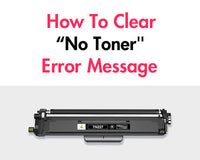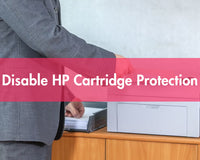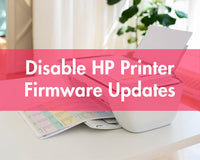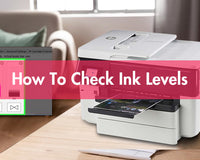Do you know about shrinky dink paper? Many people choose to draw or write on it, and then create artwork by heating it. However, it consumes a lot of time and energy if a lot of artwork is needed. At the same time, this method is not very suitable for people who are not good at drawing. However, these shortcomings can be solved by printing on shrinky dink paper. In this blog, we will give a detailed description of shrinky dink paper, analyze whether it is possible to print on shrinky dink paper, and explain the steps to be taken.
What is Shrinky Dink Paper
Shrinky dink paper is made from polystyrene sheets, which are coated with a special coating that allows ink or pencil marks to stick. When heated, it shrinks and becomes thicker. This process gives it strong durability and a unique texture. This heat-shrinking feature makes many people in the art industry use it as an important raw material for handmade artworks.
The shrinky dink paper comes with two distinct sides:
- Glossy Side: This side tends to reflect light and is less absorbent.
- Matte Side: The more suitable side for drawing, printing, and adding detail, as it absorbs ink better, providing a more defined result.
You can draw on the matte side of the shrinky dink paper and then cut it into your favorite shape. By heating it, you can get personalized works. Whether it is used to make key chains, earrings, or pendants, shrinky dink paper can show bright colors and detailed patterns. More importantly, children can also enhance their creativity and operational ability by using shrinky dink paper to create. Therefore, the use of shrinky dink paper is also very versatile in both home and school settiings.
Can You Print on Shrinky Dink Paper
Yes, you can print on shrinky dink paper, but there are a few factors to consider:
1. Printer Types:
Not all printers are suitable for printing on shrinky dink paper.
- Inkjet Printers: These are the best choice for printing on shrinky dink paper. Inkjet printers use liquid ink, which works well during the shrinking process without causing premature shrinking or other issues. Inkjet printing provides a more vibrant, high-quality result on shrinky dink paper.
- Laser Printers: It’s best to avoid laser printers for this task. The high heat from laser printers can cause the shrinky dink paper to shrink before you’re ready and may even damage the printer’s internal components.
2. Paper Compatibility:
-
Paper types: Some shrinky dink paper may not be suitable for inkjet printing and is only suitable for hand drawing. You need to choose those shrinky dink paper specifically designed for inkjet printers, which are usually labeled “inkjet compatible” or “suitable for inkjet printing” on the packaging.
- Paper thickness: Some shrinky dink paper is quite thick. If the paper is too thick, it may cause the printer to jam or print incompletely. You need to ensure the paper thickness is suitable for your printer.
How to Print on Shrinky Dink Paper
If you’re ready to try printing on shrinky dink paper, you need to follow these steps:
1. Choose Your Image
Choose the image you want to print on the shrinky dink paper. You can obtain it from the internet or create it by yourself. Please note that once the shrinky dink paper is heated, it will shrink to 1/3 of its original size. Therefore, if you want the finished image to be 1 inch in size, you need to start with an image that is 3-4 inches in size. You can upload the image and adjust its size in Microsoft Word, Photoshop, or any image-editing tool.
2. Choose Right Shrinky Dink Paper
- As mentioned earlier, choosing the right shrinky dink paper is important, as it determines whether the printing task can be completed smoothly. You need to ensure that the type and thickness of the shrinky dink paper you select are compatible with your inkjet printer.
- In addition, decide whether you need transparent or opaque paper based on your requirements. For example, transparent paper is suitable for designs that require a transparent background, while opaque paper is more suitable for full-color, vivid designs.
3. Load the Paper
The matte surface of the shrinky dink paper is generally more suitable for ink absorption than the glossy surface, ensuring clearer and more durable print patterns. Furthermore, if you plan to add details after printing, the matte surface is better at retaining colors. Therefore, when loading shrinky dink paper into the printer, please remember to print on the matte side. You need to place the matte side facing upward in the printer.
4. Adjust Printer Settings
You need to adjust the printer settings through the print dialog. Select “Properties” or “Preferences” and set the paper type to “Matte Photo Paper” or “Transparency Film”. This ensures that the printed items are complete and vivid. In addition, since we only print on the matte surface of the shrinky dink paper, you need to select single-sided printing.
5. Print Your Images
After adjusting the printer settings, click the “Print” or “OK” button to start printing the image onto shrinky dink paper. Make sure the ink is completely dry before touching the paper to avoid smudging. If you need to print multiple designs, it is recommended to test print on regular paper first. This will allow you to check that the alignment and size are correct.
6. Handle Your Prints
After printing is complete, you can perform a series of treatments on the dried print to make it more refined.
a. Trim: Use scissors to cut out your designs carefully. Make sure to leave a small border around the edges to allow for shrinkage.
b. Punch: If you plan to use the printed object to make jewelry or other items that require holes, please use a hole punch to make holes before heating. The holes will also shrink after heating, so please ensure that the holes are large enough to accommodate the items you plan to attach.
c. Heat: You can use an oven for heating.
- Preheat the oven to approximately 325°F (165°C).
- Place the cut-out patterns on a baking sheet lined with parchment paper.
- Bake for 2-3 minutes, or until they stop shrinking and begin to flatten.
- Keep a close eye on them during baking, as the shrinking process happens quickly.
d. Cool: After heating, you need to wait for a while to allow the printout to cool down completely. It is best to place it in a dry, well-ventilated environment for about five minutes. The shrinky dink craft should be thick and hard, and a lot smaller.
e. Press: If your designs curl up while heating, you can use a flat object (like a piece of parchment paper and a heavy book) to press them flat as they cool gently. If you are not satisfied or cannot flatten them, you can put them back in the oven for one minute and then flatten them again. This will help ensure your final product has a smooth finish.

Tips for Best Results
Achieving the best results with shrinky dink paper requires attention to detail throughout the process. Here are some key tips to ensure your projects turn out beautifully:
1. Adjust Image Colors
Since shrinky dink paper tends to make colors appear darker and more vibrant after shrinking, adjusting your image’s colors beforehand is useful. To ensure your design maintains its clarity and vibrancy, consider lightening the overall image or enhancing its contrast before printing. Additionally, when working with detailed artwork, enhancing line contrast can prevent fine lines from blending or becoming blurry once shrunk.
2. Avoid Overloading the Printer
While it might seem tempting to print multiple designs at once, it’s better to print one or two designs at a time, especially if you’re using a thicker shrinky dink paper. This reduces the risk of paper jams or poor-quality prints.
3. Spray Clear Enamel
After your shrinky dink craft has cooled post-shrinking, apply a layer of clear enamel spray for added protection. This coating not only seals in the vibrant colors but also protects your creation from scratches, fading, and wear over time. It’s particularly useful for items that will be handled frequently, such as jewelry, key chains, or ornaments.
Conclusion
Printing on shrinky dink paper is an easy and exciting way to create custom, shrinkable designs for jewelry, decorations, and more. Whether you’re crafting for personal enjoyment or looking to make gifts, following these steps and tips will help ensure that your printed creations come out beautifully. More importantly, it can be a great way to boost your creativity and practical skills. In addition, if you want to explore more potential in printing paper, you can read our blogs: How to Print on Canvas and Can You Print on Watercolor Paper.












